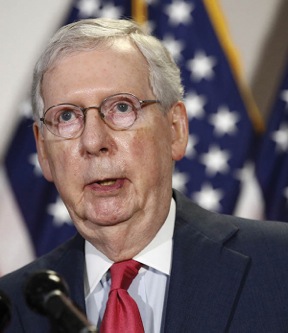
Courtesy photo
By Earl Ofari Hutchinson
Contributing Columnist
“Look we have a country that is bloated with rules, regulations and with, frankly, people that are unnecessary to do.”
That was Donald Trump speaking about the size of government and the need to whittle it down in a rangy interview with Time magazine in November. He had just been named Time’s 2024 “Person of the Year.”
This is the second in a two-part series based on Earl Ofari Hutchinson’s latest book, “The Musk DOGE Fraud” (Middle Passage Press 2025).
The need to hack away at the alleged swell in the federal government was a theme that Trump has practically made one of the two mantras of his reelection campaign. The other is the vow to mass deport illegal immigrants.
Hordes of Republican elected leaders, conservative think tanks, bloggers and, even on occasion, Democratic presidents have chanted the big government mantra. They publicly pledge to trim, revamp and improve its efficiency.
The big government as a hydra-headed monster is hardly anything new to Trump. The charge of a too big, out of control, wasteful federal government is so ingrained in political lore that by the time Trump got around to making it his cry it was a charge that much of the media and public virtually accepted as sacred fact.
But is it? Is the federal government really riddled with the mountainous waste, inefficiency and incompetence that Trump and Elon Musk rail about? And if, true, just how much waste and inefficiency is there?
Much of the federal budget goes for mandated programs such as Medicare and Social Security. Another huge slice goes to pay off interest on the federal debt.
However, that is glossed over. The real target in the assault is the federal workforce and their alleged inefficient and incompetence and programs and agencies Trump just doesn’t like on ideological grounds.
Trump repeatedly contends that there are way too many federal employees. And they have to go.
This is a gross exaggeration. In the four plus decades dating back to the 1980s, the number of federal employees has stagnated. Some key agencies such as the Veterans Administration and the Federal Aviation Administration’s air traffic control centers are chronically short handed in staff. Excluding the U.S. Postal Service, there are nearly two and a half million federal workers in 2024.
Labor experts, federal agency heads and officials, have warned for years prior to Trump’s reentrance into the Oval Office that the federal workforce declined in relation to the tremendous increase in population in the past 50 years. That decline poses hazards to public safety, the delivery of services and effective operations.
Trump’s second charge about the federal government was that it is riddled with inefficiency and employee incompetence. Thst is the stock charge of Republicans, many Democrats and much of the media and public.
That contention is fairly easy to sell. Tens of millions of Americans have to deal with one or more government agencies daily for their checks, payments, information and documents.
To many, it seems the government was a tangle of bureaucracy and regulations. It is rare to find someone who hasn’t at one time or another screamed in frustration at dealing with a government agency. When they do, they invariably blame their frustration on “incompetent” and “indifferent” employees or even the agency.
However, often forgotten is that federal agencies, indeed all government agencies, deal with a tsunami of issues, problems and services. Invariably, there will be hitches, problems and failures.
Trump and Musk also blame much of the alleged government bloat on supposedly overpaid employees who were getting fat on outsized salaries, perks and benefits. The Pew Research Center debunked that notion. Based on Office of Personnel Management data, the center found that in 2024, the average pay of federal workers on average nudged slightly over $100,000 a year.
That was hardly extravagant when considering that many of the agency employees were college graduates, many held advanced and specialized degrees, and prized administrative and technical skills and training. The best example were the doctors, surgeons, medical researchers, accountants and attorneys employed by the government. They made up a large part of the federal workforce. Nearly all these top-notch professionals could make far more in private industry.
Trump and Musk and their predecessors who targeted a too big, too wasteful government pick the softest of soft targets in the issue of government waste. That will always play well with the tens of millions of Americans who rely on the government for services and payments.
This all fits in neatly with Trump’s prime contention. That the federal government is the pure and simple enemy. More particularly, it is his enemy.
The never-ending myth of a too big, too bloated, too inefficient government is the perfect cover and issue to neutralize, if not eliminate that enemy.
Earl Ofari Hutchinson is an author and political analyst. He is the host of the weekly The Hutchinson Report Facebook Livestreamed.



